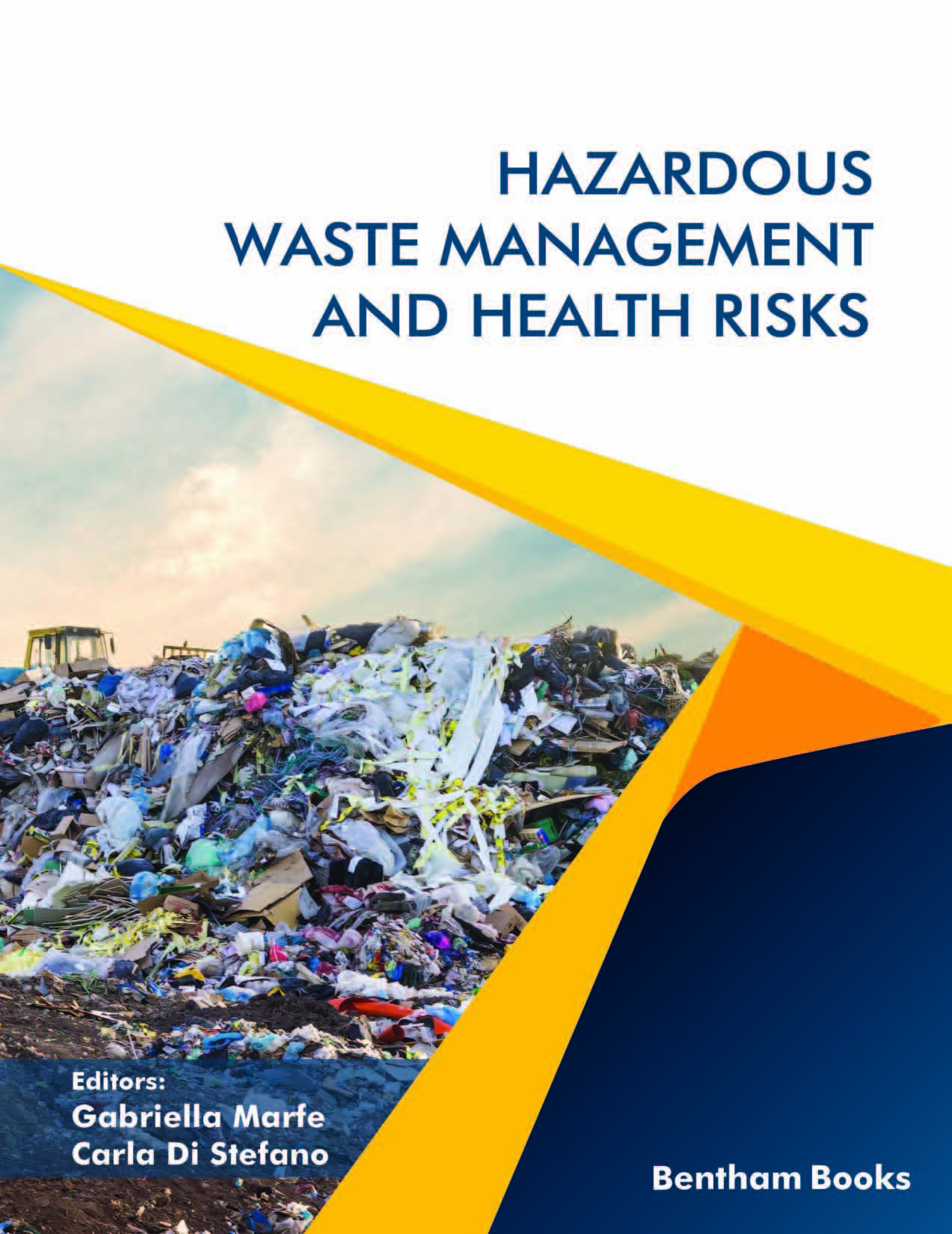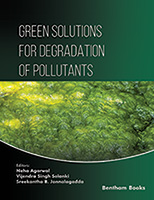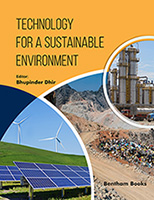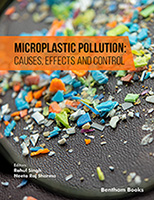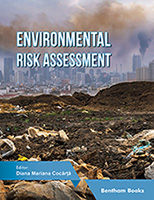Never has it been more necessary for such a book to investigate the effect of relentless human creation of dangerous substances, endangering clean air, soil and sea, on which all life depends in a completely reckless and boundless way, severely damaging the habitats of all living things on earth and causing a 6th ever mass extinction. In fact, Paul Ehrlich, co-author of the “The Population Bomb Revisited [1] (quoted in Carrington D.P. 22, 03, 2018 In the Guardian Newspaper) [2] warned about the chemical pollution,
“The evidence we have is that toxics reduce the intelligence of children, and members of the first heavily influenced generation are now adults.” He treats this risk with characteristic dark humour: “The first empirical evidence we are dumbing down Homo sapiens were the Republican debates in the US 2016 presidential elections – and the resultant ‘kakistocracy’. On the other hand, toxification may solve the population problem, since sperm counts are plunging.”
This subject, has been most urgent since the realisation of the causes of Minamata disease from 1932 at the Chisso industrial plant, when people were contaminated in Japan by mercury poisoning from eating contaminated fish and sea food and became very ill as a result. Effects included numbness and severe neurological life changing problems [3]. These risks have not gone away as mercury amongst other substances is still discharged into many rivers and seas. We do not seem to have learned how easy it is to affect human health by indiscriminate and irresponsible waste policies. Iconic disasters include Seveso in 1976, in Italy an explosion of tetrachlorodibenzo-p-dioxin (TCDD), a kind of dioxin owned by Roche. Carcinogenic effects of dioxins have been described and documented at high dose exposures, such as after the Seveso accident [4-16]. The disaster at the Union Carbide plant in Bhopal in India was terrible. The plant produced the carbamate carbaryl, also known as Sevin that was not particularly hazardous substance, but the chemical methyl-isocyanate (MIC) which was used in its production was extremely toxic. On December 2, 1984 a lethal cloud of Methyl Isocyanate (MIC) leaked from plant and its release covered approximately nine miles and consisted of 40 tons of MIC, causing an estimated 2500 immediate fatalities and more than 10,000 deaths within a week of the event [17, 18]. Furthermore, Love Canal (a neighborhood in Niagara Falls) was used to dump waste of World War II (1940) and then, in 1942, Hooker Chemical put into an estimated 21,000 tons of hazardous chemical waste (exachlorocyclohexanes, benzylchlorides, organic sulfur compounds, chlorobenzenes, and sodium sulfide/sulfhydrates) causing different illness [23]. With regard to incineration plants, Medical Students are still not being taught about the health dangers, according to a report by Drs Thompson and Antony [24], even though it is known that the area around Heathrow airport produces a danger with a toxic mix of aircraft fumes, car pollution from the busy M25 Motorway and combined with the very large waste incinerator it keeps the chronic obstructive pulmonary disease (COPD) ward extremely busy in the nearby hospital to which I was kindly invited to speak and to meet people who were affected very badly by this toxic waste and mixture with other pollutants [28].
On the other hand, it is becoming increasingly apparent that Social Prescribing as it is now called, is the latest trend in health care, which is the idea that being part of and being able to experience. Nature is something which can actually heal the sick and enhances human health rather than destroying it and is extremely good for human health including major benefits for mental health. At the other end of the spectrum, some of the most hazardous waste products being so called thrown away, into the environment, harm animals, fish, marine life, the climate itself and of course can be very damaging indeed to human health. Even some of the most sophisticated products are now found to be causing damage to health. Many species are going extinct very fast and before extinction species become weaker in many respects. Hazardous health risks contribute to this situation and we need to be most careful that it does not happen to us. In fact, hippocratic oath advises MDs that they must always try to preserve life. Would it not be best if something similar was created for people introducing the use of hazardous chemicals?
The issues with hazardous waste are many and varied but also include spatial movement of the waste from the original contamination site and can turn up anywhere around the globe. For example, hydrochlorofluorocarbons (HCFCs) and chlorofluorocarbons (CFCs) harmed the ozone layer far above the earth miles from the original site of their use. Temporally too the modern chlorine family can last a long time in the atmosphere, and nuclear waste has the distinction that its half-life when it can do damage to human health lasts longer in some cases than the length of time of the whole of human civilisation itself. The nuclear facility at Sellafield has been dumped radioactive waste in the Irish Sea for years and absolutely devastating and cruel health effects are borne by some of the receiving end of this [31]. We must surely be able to behave better than this and to sort out our waste in a more responsible way. Such hazards are very, very long lasting and the ethics of leaving such dangerous waste for thousands of generations to come are very problematic and simply cannot be justified at all. Even the storage facilities will move in nature over time and so are no guarantee of safety for future generations. If we don’t want to be hated by future generations then we need urgently to sort out the issue of hazardous chemicals with great urgency.
The dangers of all forms of hazardous waste are very poorly understood and as with much in the economy the attitude seems to pervade that if someone has paid for something or is making money out of the transaction then it must by definition be ‘a good thing for everyone in the community as a whole. For example, there was a huge fire last week, at the Lubrizol factory in Rouen which residents say may have even polluted the River Seine, and which is owned by one of the world richest men. The local people felt the effects of the black soot pollution but not the owner of the factory who stands to make a great profit from the chemicals [32, 33]. Unfortunately, this is not really a complete picture, for example when one company decides to go fracking, other people can find that waste products can come up through the water table and right into the taps in people’s houses even causing fires. When a nuclear power plant decides to circulate cooling water or sending waste into local pipelines, the local community more often than not find there are health effects which they have to deal with and subsidize. As with many things in nature, everything circulates around the globe, someone can throw a plastic bag away in one part of the world and it can turn up in an ocean current on the other side of the world, and its effects are definitely not costed or planned.
The issue of Hazardous Waste and Health Risks is very dear to my heart having possibly suffered a devastating and late stage miscarriage possibly attributable to Chernobyl and its hazardous waste. Today everyone on earth is touched by the issues that are discussed. No animal or person is immune from pollution from the worlds hazardous and human made chemicals and substances. We now know that soon there will be more plastic in the sea than fish, that most sea birds are full of items such as cigarette lighters, boxes of plasters and all sorts of other plastic debris. Many whales are dying due to the ingestion of countless plastic bags. Our own bodies, our breast milk is full of all sorts of waste and effluent.
The issue is that so called ‘waste’ is ‘flushed away’ from the process in which it is being used. But whilst we are flushing away something we regard as waste thinking our beautiful planet will somehow act as a global dustbin and ‘get rid of it’ someone else on the other side of the world is ‘throwing something else away’ imagining then it will somehow spontaneously combust into a puff of smoke and disappear. However, the world is not like that, nothing vanishes, it just pops up somewhere else, everything we do and everything we regard as waste goes somewhere, it goes somewhere else. And in so doing it can cause unintended consequences and harm to other people, most of whom are not even involved in the use of that product or substance.
In this context, nuclear waste, is now known to cause all sorts of cancers, some to the workers at the plant but much to the surrounding people or fauna. We also know that the precautionary principle is useful in helping prevent risks we cannot envisage. For example, when the steam engine was invented no one ever expected that global warming would become one of the most pressing human health risks of our age. When plastic was invented no one ever suspected the damage it would do to marine life. When DDT (dichlorodiphenyltrichloroethane) was invented no one ever thought that spring would become silent and it would wipe out the birds and weaken their eggs, as reported by Rachel Carson's in her Silent Spring [34-38].
The point is that one person’s utility maximization and use of a product or process is another person’s hazardous waste. We were unfortunately philosophically arrogant enough to believe that notion that we are the stewards of the earth and all of nature bows down to our species. We have found out too late, that this is not only the case but that nature fights back and that what we do to nature has a habit of coming back to haunt us too.
We have systematically destroyed the habitat of many of our fellow sister and brother creatures and never stopped to think that we are in fact just another creature. In some ways we are rather stupid. There is nothing in nature that says that the current mass extinction we have managed to cause ourselves will spare our species especially. In fact, the larger and more complex our society, actually the less resilient it becomes to issues, disasters and pollution. Our so called civilisation is in fact relatively new, only 10,000 years old and by rocking its very foundations, reducing land mass, creating sea level rise, huge dead zones in the seas we are reducing drastically our own habitat just at a time when our species has increased in number. Similarly by squandering many of the earth’s wonderful resources, we have depleted the materials we depend on and chucked them away as waste, when they could much more easily be reused, recycled and repaired so that no more of earths finite resources are plundered. As Boulding says, anyone who thinks that we can have infinite growth is either a madman or an economist.
It seems people are beginning to understand that living lightly on the earth might be the only way to the future, for example when a hurricane, devastated Barbuda the commissioner told me instead of building brick houses, they would now be building them with grass, someone else told me yesterday that stones are now becoming the building bricks of choice. Cement has had a powerful health impact and we may well have to revert to earlier less dangerous building methods. Ozone depleting chemicals are still causing holes in the ozone long after they have done the job they were intended to do. According to Nature Journal, the latest real concern is the 4,730 (per- and polyfluoroalkyl substances)-PFAS-related structures from patent filings and chemical registries, (https://www.atsdr.cdc.gov/toxprofiles/tp200.pdf), as well as a range of very serious health problems linked to PFOA (perfluorooctanoic acid) and PFOS (perfluorooctane sulfonic acid) [39-43]. The problem of waste is that we throw it away, and it goes to landfill and then the chemicals leach into the hydrology systems of all kinds where they pollute and cause serious health effects either directly or indirectly.
Understanding the impacts of hazardous waste and applying the precautionary principle in all our work is one way to start addressing these problems. Also for humans to admit once and for all that we simply do not and never will know everything about nature and how it works, means a bit more humility when we find new wonder substances and planning for unintended consequences might be a start to a more successful relationship with nature and the roulette which is human health. The solution needs to be to use all hazardous chemicals with great caution and not to use them to make money or products from the supply side, only to use them when we really need them and to start to consider alternatives or not using them at all. Many products we have become accustomed to might on real consideration be found to be not worth those risks. I always mention that in Tudor times- around 1600 ladies thought it was a good idea to whiten their faces with lead and they gave themselves lead poisoning. When people realised how dangerous it was, they stopped doing it. Today no one would be so silly as to do this. And so it is with hazardous chemicals, we live in an age where it is considered necessary to enjoy their so called benefits, but a new generation of young people is arising who are more frugal and more circumspect about unnecessary consumption We need to listen to them and start to end our love affair with dangerous waste and to question the use of hazardous materials: just because we might do it or decide not to do so.
I recommend this book to you and hope you enjoy the ideas and new perspectives that it raises and we all hope I am sure that it will contribute to bringing the human species to some kind of realisation that it has a responsibility to all of nature and to its own kind to clean up its act and stop polluting our wonderful clean air, soil and water and to use nature more maturely and more beneficially for ourselves, our own health and for all of nature.
REFERENCES
[1] Ehrlich PR, Ehrlich AH. The Population Bomb Revisited. The Electronic Journal of Sustainable Development 2009; 1(3).
[2] Carrington D. Paul Ehrlich: Collapse of civilization is a near certainty within decades. D.P. 22, 03, 2018; In the Guardian https://www.theguardian.com/cities/2018/mar/22/collapse-civilisation-near-certain-decades-population-bomb-paul-ehrlich
[3] Hachiya H. The History and the Present of Minamata Disease. —Entering the second half a century—. Japan Med Assoc
J 2006; 49(3): 112-8.
[4] Warner M, Eskenazi B, Mocarelli P, et al. Serum dioxin concentrations and breast cancer risk in the Seveso women’s
health study. Environ. Health Perspect. 2002; 110, 625–628. 10.
[http://dx.doi.org/10.1289/ehp.02110625]
[5] Consonni D, Pesatori AC, Zocchetti C, et al. Mortality in a population exposed to dioxin after the Seveso, Italy, accident
in 1976: 25 years of follow-up. Amer. J. Epidemiol. 2008; 167, 847–858. 11.
[6] Pesatori AC, Consonni D, Rubagotti M, Grillo P, Bertazzi PA. Cancer incidence in the population exposed to dioxin after
the “Seveso accident”: twenty years of follow-up. Environ Health 2009; 8: 39.
[http://dx.doi.org/10.1186/1476-069X-8-39] [PMID: 19754930]
[7] Warner M, Mocarelli P, Samuels S, Needham L, Brambilla P, Eskenazi B. Dioxin exposure and cancer risk in the Seveso
Women’s Health Study. Environ Health Perspect 2011; 119(12): 1700-5.
[http://dx.doi.org/10.1289/ehp.1103720] [PMID: 21810551]
[8] Ye M, Warner M, Mocarelli P, Brambilla P, Eskenazi B. Prenatal exposure to TCDD and atopic conditions in the Seveso
second generation: a prospective cohort study. Environ Health 2018; 17(1): 22.
[http://dx.doi.org/10.1186/s12940-018-0365-2] [PMID: 29482571]
[9] Eskenazi B, Warner M, Brambilla P, Signorini S, Ames J, Mocarelli P. The Seveso accident: A look at 40 years of health
research and beyond. Environ Int 2018; 121(Pt 1): 71-84.
[http://dx.doi.org/10.1016/j.envint.2018.08.051] [PMID: 30179766]
[10] Eskenazi B, Mocarelli P, Warner M, et al. Seveso Women’s Health Study: a study of the effects of 2,3,7,8-
tetrachlorodibenzo-p-dioxin on reproductive health. Chemosphere 2000; 40(9-11): 1247-53.
[http://dx.doi.org/10.1016/S0045-6535(99)00376-8] [PMID: 10739069]
[11] Eskenazi B, Mocarelli P, Warner M, et al. Seveso Women’s Health Study: does zone of residence predict individual
TCDD exposure? Chemosphere 2001; 43(4-7): 937-42.
[http://dx.doi.org/10.1016/S0045-6535(00)00454-9] [PMID: 11372887]
[12] Eskenazi B, Mocarelli P, Warner M, et al. Serum dioxin concentrations and endometriosis: a cohort study in Seveso,
Italy. Environ Health Perspect 2002; 110(7): 629-34.
[http://dx.doi.org/10.1289/ehp.02110629] [PMID: 12117638]
[13] Eskenazi B, Mocarelli P, Warner M, et al. Relationship of serum TCDD concentrations and age at exposure of female
residents of Seveso, Italy. Environ Health Perspect 2004; 112(1): 22-7.
[http://dx.doi.org/10.1289/ehp.6573] [PMID: 14698926]
[14] Warner M, Eskenazi B, Patterson DG, et al. Dioxin-Like TEQ of women from the Seveso, Italy area by ID-HRGC/HRMS
and CALUX. J Expo Anal Environ Epidemiol 2005; 15(4): 310-8.
[http://dx.doi.org/10.1038/sj.jea.7500407] [PMID: 15383834]
[15] Warner M, Eskenazi B, Olive DL, et al. Serum dioxin concentrations and quality of ovarian function in women of Seveso.
Environ Health Perspect 2007; 115(3): 336-40.
[http://dx.doi.org/10.1289/ehp.9667] [PMID: 17431480]
[16] Eskenazi B, Warner M, Samuels S, et al. Serum dioxin concentrations and risk of uterine leiomyoma in the Seveso
Women's Health Study Am J Epidemiol. 2007; 166(1):79-87.
[17] Matilal S, Höpfl H. Accounting for the Bhopal disaster: footnotes and photographs. Account Audit Account J 2009;
22(6): 953-72.
[http://dx.doi.org/10.1108/09513570910980472]
[18] Eckerman I. Chemical Industry and Public Health Bhopal as an Example Essay in Master of Public Health Nordic School
of Public Health GöteborgSweden MPH200124.
[19] The World’s Worst Pollution Problems: Assessing Health Risks at Hazardous Waste Sites 2012. www.worstpolluted.org
[20] Gensburg LJ, Pantea C, Kielb C, Fitzgerald E, Stark A, Kim N. Cancer incidence among former Love Canal residents.
Environ Health Perspect 2009; 117(8): 1265-71.
[http://dx.doi.org/10.1289/ehp.0800153] [PMID: 19672407]
[21] Kielb CL, Pantea CI, Gensburg LJ, et al. Concentrations of selected organochlorines and chlorobenzenes in the serum of
former Love Canal residents, Niagara Falls, New York. Environ Res 2010; 110(3): 220-5.
[http://dx.doi.org/10.1016/j.envres.2009.11.004] [PMID: 20117765]
[22] Vianna NJ, Polan AK. Incidence of low birth weight among Love Canal residents. Science 1984; 226(4679): 1217-9.
[http://dx.doi.org/10.1126/science.6505690] [PMID: 6505690]
[23] Goldman LR, Paigen B, Magnant MM, Highland JH. Low birth weight, prematurity and birth defects in children living
near the hazardous waste site Love Canal. Hazard Waste Hazard Mater 1985; (2)209-23.
[http://dx.doi.org/10.1089/hwm.1985.2.209]
[24] Thompson J, Anthony H. The British Society for Ecological Medicine BSEM2005.
[25] Air pollution concerns at smaller airports Filed in Air Pollution, Airports, Issues, News from the AEF Feb 21 2019.
https://www.aef.org.uk/2019/02/21/air-pollution-concerns-at-smaller-airports/
[26] Irvine D, Budd L, Ison S, Kitching G. The environmental effects of peak hour air traffic congestion: The case of London
Heathrow Airport Research in Transportation Economics, 2016; 55:67-73.
[27] Nichols TP, Leinster P, McIntyre AE, Lester JN, Perry R. A survey of air pollution in the vicinity of Heathrow airport
(London). Sci Total Environ 1981; 19: 285-92.
[http://dx.doi.org/10.1016/0048-9697(81)90023-1]
[28] Masiol M, Harrison RM. Quantification of air quality impacts of London Heathrow Airport (UK) from 2005 to 2012.
Atmos Environ 2015; 116: 308-19.
[http://dx.doi.org/10.1016/j.atmosenv.2015.06.048]
[29] Flanaga P. Huge nuclear dump near Sellafield ‘will leak into the Irish sea’. Mirror (Stafford, Tex) 2014; 22:.https://www.irishmirror.ie/news/irish-news/huge-nuclear-dump-near-sellafield-3443341
[30] Sellafield Environmental Protection Agency. https://www.epa.ie/radiation/monassess/sellafield/
[31] Oppenheimer A Britain: Sellafield, Salmon, and The Irish Sea Bulletin of the Atomic Scientists 2003; 59 issue: 5, page(s):
11-13.
[32] Doman B. want the truth!’ Fear and suspicion in Rouen after chemical plant blaze Issued on: 01/10/2019 - 19:12Modified:
02/10/2019 - 09:06. https://www.france24.com/en/20191001-france-rouen-chemical-plant-fire-lubrizol-pollution-philippe
[33] French factory fire could pollute Seine river, officials warn. 26 September 2019. https://www.bbc.com/news/worldeurope-
49839570
[34] Riana Bornman MS, Bouwman H. Environmental pollutants and diseases of sexual development in humans and wildlife
in South Africa: harbingers of impact on overall health? Reprod Domest Anim 2012; 47 (Suppl. 4): 327-32.
[http://dx.doi.org/10.1111/j.1439-0531.2012.02094.x] [PMID: 22827388]
[35] Beard J. DDT and human health. Sci Total Environ 2006; 355(1-3): 78-89.
[http://dx.doi.org/10.1016/j.scitotenv.2005.02.022] [PMID: 15894351] [Review].
[36] Richard A, Lovett RA. Oceans release DDT from decades ago 7 January 2010. Nature
[http://dx.doi.org/10.1038/news.2010.4]
[37] World Health Organization. 1979.
[38] Rahman MM. Insecticide substitutes for DDT to control mosquitoes may be causes of several diseases. Environ Sci Pollut
Res Int 2013; 20(4): 2064-9.
[http://dx.doi.org/10.1007/s11356-012-1145-0] [PMID: 22956113]
[39] Lim X. Tainted water: the scientists tracing thousands of fluorinated chemicals in our environment 2019.
[http://dx.doi.org/10.1038/d41586-019-00441-1]
[40] Luz AL, Anderson JK, Goodrum P, Durda J. Perfluorohexanoic acid toxicity, part I: Development of a chronic human
health toxicity value for use in risk assessment. Regul Toxicol Pharmacol 2019; 103: 41-55.
[http://dx.doi.org/10.1016/j.yrtph.2019.01.019] [PMID: 30639337]
[41] Anderson JK, Luz AL, Goodrum P, Durda J. Perfluorohexanoic acid toxicity, part II: Application of human health
toxicity value for risk characterization. Regul Toxicol Pharmacol 2019; 103: 10-20.
[http://dx.doi.org/10.1016/j.yrtph.2019.01.020] [PMID: 30634020]
[42] Xiao F. Emerging poly- and perfluoroalkyl substances in the aquatic environment: A review of current literature. Water
Res 2017; 124(124): 482-95.
[http://dx.doi.org/10.1016/j.watres.2017.07.024] [PMID: 28800519]
[43] Corton JC, Peters JM, Klaunig JE. The PPARα-dependent rodent liver tumor response is not relevant to humans:
addressing misconceptions. Arch Toxicol 2018; 92(1): 83-119.
[http://dx.doi.org/10.1007/s00204-017-2094-7] [PMID: 29197930]
Dr. Miriam Kennet
Green Economics Institute
Economics and Social and Environmental Justice

